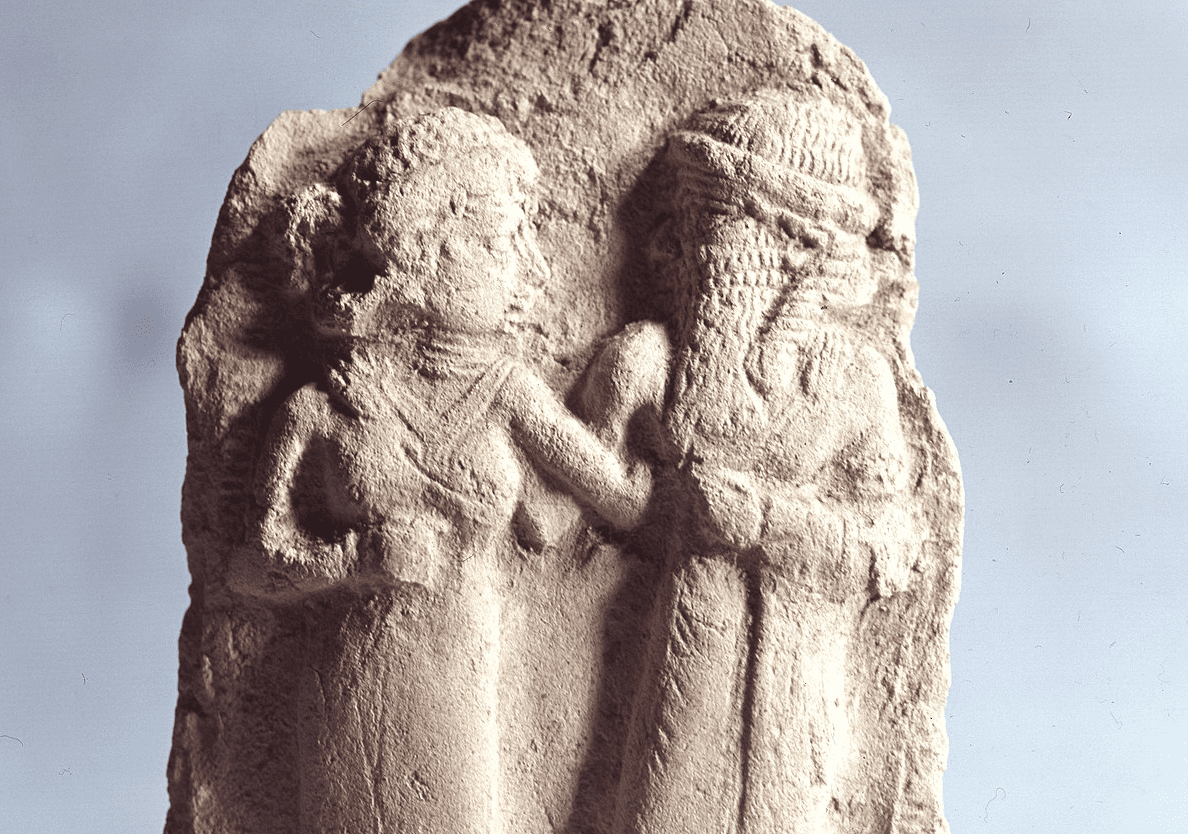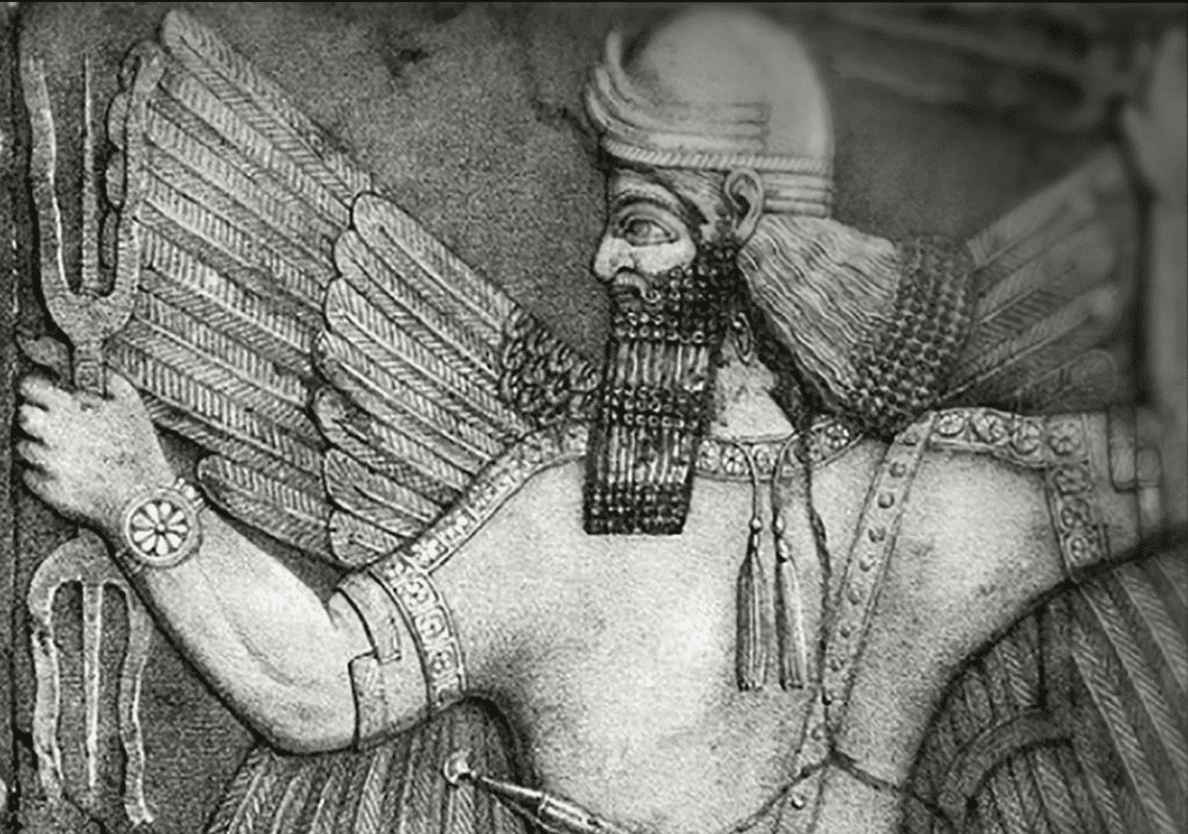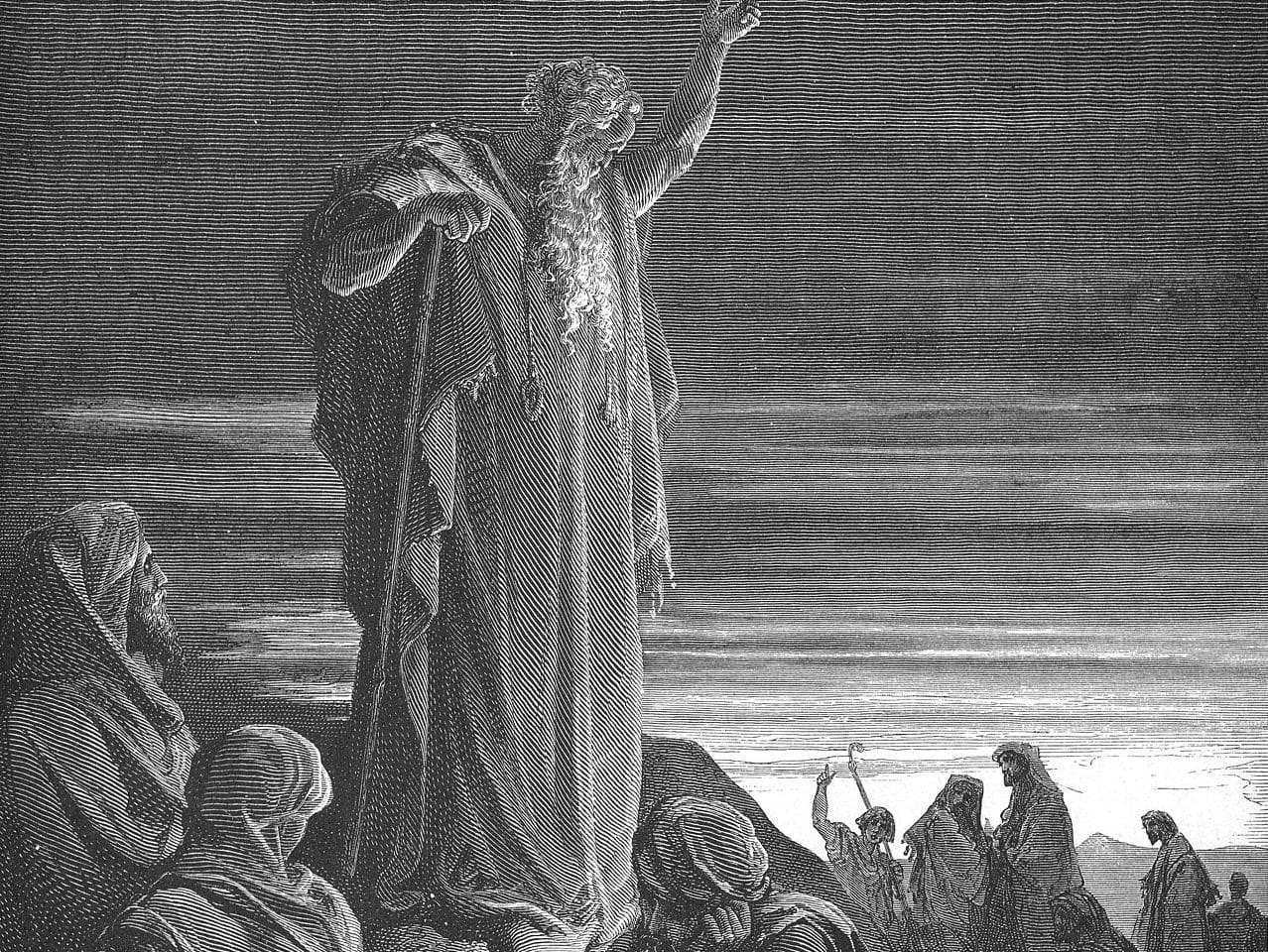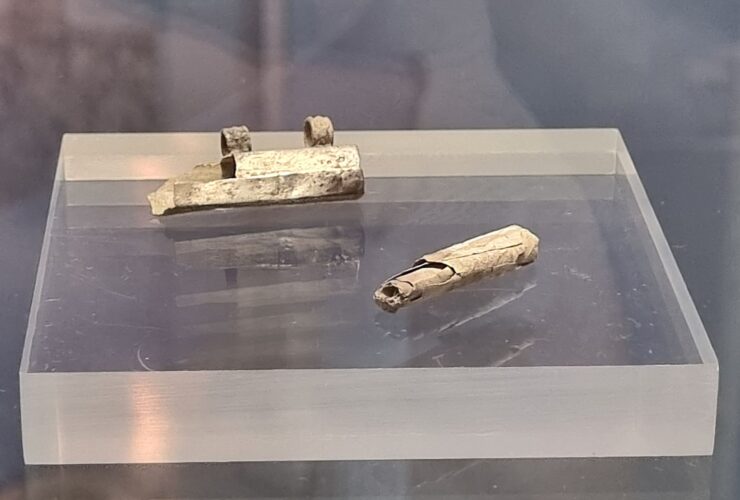In Ezekiel 8, the Lord falls heavily upon the exiled prophet and in “visions of God” takes him on a tour of the Temple in Jerusalem in which he witnesses several abominations—each one followed by an even greater one. “Son of man,” God says, “do you see what they are doing, the great abominations that the house of Israel are committing here, to drive me far from my sanctuary? But you will see still greater abominations.” (Ezekiel 8:6)
“The image was made of metal…. In the eye socket there was lead, which, on a fire being kindled within the hollow image, melted and ran down like tears.”
One of these that Ezekiel witnessed was at the northern gate where women sat weeping for Tammuz (Ezekiel 8:14). Certainly, this was considered a major offence to the Lord, but just who or what was Tammuz? Although opinions somewhat vary, most commentators agree that, “Tammuz is the Hebrew form of Dumuzi, a Mesopotamian god of vegetation who annually died and rose again. The fourth Babylonian month (in June/July) was named in honor of Tammuz. According to mythology, his lover, Ishtar, had betrayed Tammuz and sent him to the underworld, explaining why the earth’s vegetation dried up and died during the summer. During the last several days of this hot month, an image of dead Tammuz was shown to mourning worshipers. This was believed to help resurrect Tammuz, promising renewal of the earth’s vegetation.”[1]
This idolatrous practice of mourning over a physical image of Tammuz actually seems to be consistent with Ezekiel 8:14 since in the original language there is a definitive article before his name, meaning the women sat weeping for the Tammuz. Actually, some believe that even the image itself was made to weep. As a matter of fact, one old rabbinical commentator claims that “the image was made of metal, and was hollow. In the eye socket there was lead, which, on a fire being kindled within the hollow image, melted and ran down like tears. Another represents the Tammuz as a hollow image with holes through which water flowed.”[2] If this be so, it could be that the image was made to weep, and then the worshippers wept along with it.


Still, there is yet another ancient, and rather bizarre, tradition which makes Tammuz the name of an old idolatrous prophet, who was put to death by a king for attempting to persuade him to worship the stars: “On the night of his death all the images gathered from the ends of the earth to the temple of Babel, where was the golden image of the sun. This image, suspended between heaven and earth, fell down in the midst of the temple, and all the other images fell around it, and wept all night because of the death of the prophet. After this there was an annual mourning on account of his death.”[3]
Of course, whether Tammuz was a myth, an idol, or a man, one thing is certain: These women sat at the gate of the Lord’s house weeping and worshipping something other than God. “Therefore,” says the Lord, “I will act in wrath. My eye will not spare, nor will I have pity. And though they cry in my ears with a loud voice, I will not hear them.” (Ezekiel 8:18)

Ryan Hembree is a daily co-host, speaker, and writer of Bible Discovery. He also hosts a YouTube channel that shows the unity of the Bible and how science and Scripture fit together. Ryan also has an honorary Masters of Ministry in Creation Science from Phoenix University of Theology.






